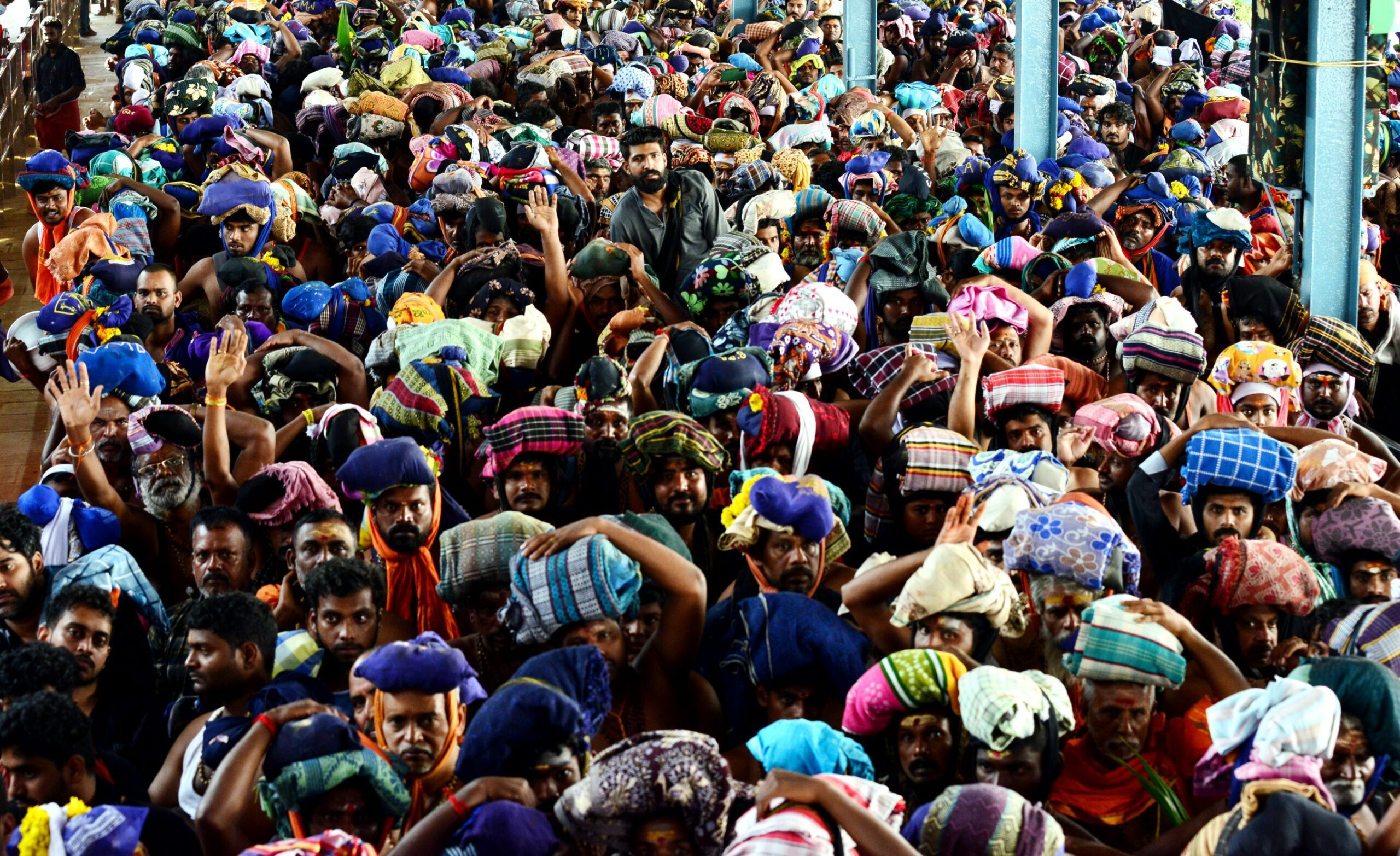Kerala fears Railways will abandon a long-proposed alignment and prefer an elevated rail corridor with little benefit to local communities.

File photo of devotees thronging Sabarimala. (Supplied)
The Central government earmarking ₹100 crore in the Union budget for the long-delayed Sabarimala Rail Project created euphoria across Kerala.
However, there appears to be a need for more clarity over how the Railway Ministry is fixing its alignment and finding resources to meet the huge expenditure involved.
Besides ensuring rail connectivity to Sabarimala, the forest abode of celibate god Ayyappa, the revival of the more-than-25-year-old moribund project might bring the Idukki and Pathanamthitta districts of Kerala into the national rail network.
Kerala’s booming towns like Perumbavoor, Muvattupuzha, Thodupuzha, and Erattupetta — hubs of large-scale cash crop production — might benefit from the project.
In the case of the BJP, the project is beneficial as connectivity to Sabarimala would make devotees across South India happy. In all probability, such a project may even ensure electoral benefits to the saffron party, which is in power at the Centre and has been struggling to find a foothold in Kerala.
As the rail project passes through several Syrian Christian belts of central Kerala, it might also help the BJP augment its ongoing efforts to reach out to the community and win its confidence. These are the areas where a large number of Kerala’s over 18 percent Christians is concentrated.
Financially, the Kerala government has already expressed its readiness to meet half of the project’s expenditure as it can significantly enhance the developmental aspirations of the central part of the state.
However, Railways is now tight-lipped over whether it would go by the present alignment of the 116-km-long project, which begins in Angamaly in the Ernakulam district and ends at Erumeli on the foothills of Sabarimala in the Pathanamthitta district.
Southern Railway general manager RN Singh has already said that an alternative project was also in consideration, and that involved an elevated rail corridor from Chengannur to Pampa.
Chengannur is the nearest railhead to Sabarimala, and the base camp Pampa is 26.4 km away.
Such a short-distance corridor entails less expense and infrastructure, and Singh indicated a greater preference for it than the Angamaly-Erumeli new rail route.
However, Kerala feels such an elevated corridor would not serve a great purpose. As the Sabarimala pilgrimage is seasonal, the corridor would not attract passengers in most months of the year.
Furthermore, it would not address the transport and developmental needs of people in the Ernakulam, Idukki, Kottayam, and Pathanamthitta districts.
The state’s stand is that the project must address the transport needs of people in central Kerala even while ensuring connectivity to Sabarimala.
The region’s farming communities and their booming economy can support the trains in the months in which there would not be any pilgrims bound for Sabarimala, the government said.
If the Railways drop the 25-year-old alignment and opt for the elevated corridor, there would not be any sharing of expenses, as promised by the state.
Sources in the Railways confirmed that a techno-economic feasibility study for the Chengannur-Pampa rapid rail transit project will begin very soon. If the report is positive, the ministry will go by it. Then the Angamaly-Erumely project, sanctioned in 1997-98, would be abandoned.
While sanctioning the project, the estimated expense was hardly ₹550 crore.
In recent years, the estimate has been revised to ₹3,448 crore. Rail infrastructure experts like E Sreedharan think the expenses would exceed ₹10,000 crore if implemented shortly.
Soon after sanctioning the project, Railways initiated works in a 17 km stretch between Angamaly and Kalady, the birthplace of Shankaracharya.
However, some court cases and protests related to land acquisition and compensation have prevented the ministry from going forward.
According to Idukki’s Lok Sabha member Dean Kuriakose, the state had decided to share the expenses after the Centre asked it to do it for early project facilitation.
“If the Railway Ministry is abandoning the existing project and favours the elevated corridor between Chengannur and Pamba, that would be a great injustice to the people of the Idukki and Pathanamthitta districts. In the long run, the elevated corridor would not be viable as the pilgrimage is seasonal,” he said.
As per the existing agreement between the state and the Centre, the Railways must construct and maintain the 116-km rail route.
The en-route station development will be brought under a public-private partnership, and the KIIFB will set up a special-purpose vehicle for that.
After deducting the expenses, the income must be equal between the state and the Railways. Sanctioned in 1997-98, it is one of the 10 stalled infrastructure projects of Southern Railway.
The project was kept in abeyance by the Railways in December 2019.
“If implemented, the new rail route would help Sabarimala pilgrims significantly. During the pilgrimage season, it would decongest trains bound for Thiruvananthapuram, Nagercoil and Kanyakumari. Pilgrims from the whole of South India can have dedicated trains that will take them to the base camp of Sabarimala,” Kerala’s Minister for Temple Affairs K Radhakrishnan told South First.
“The existing line through Chengannur is severely congested, and only a few additional trains can be operated even if the elevated Pamba-Chengannur elevated corridor is established.
“In the larger interests of pilgrims and local communities, the Angamaly-Erumeli line must be implemented,” he added.

Apr 19, 2024

Apr 19, 2024

Apr 19, 2024

Apr 19, 2024

Apr 19, 2024